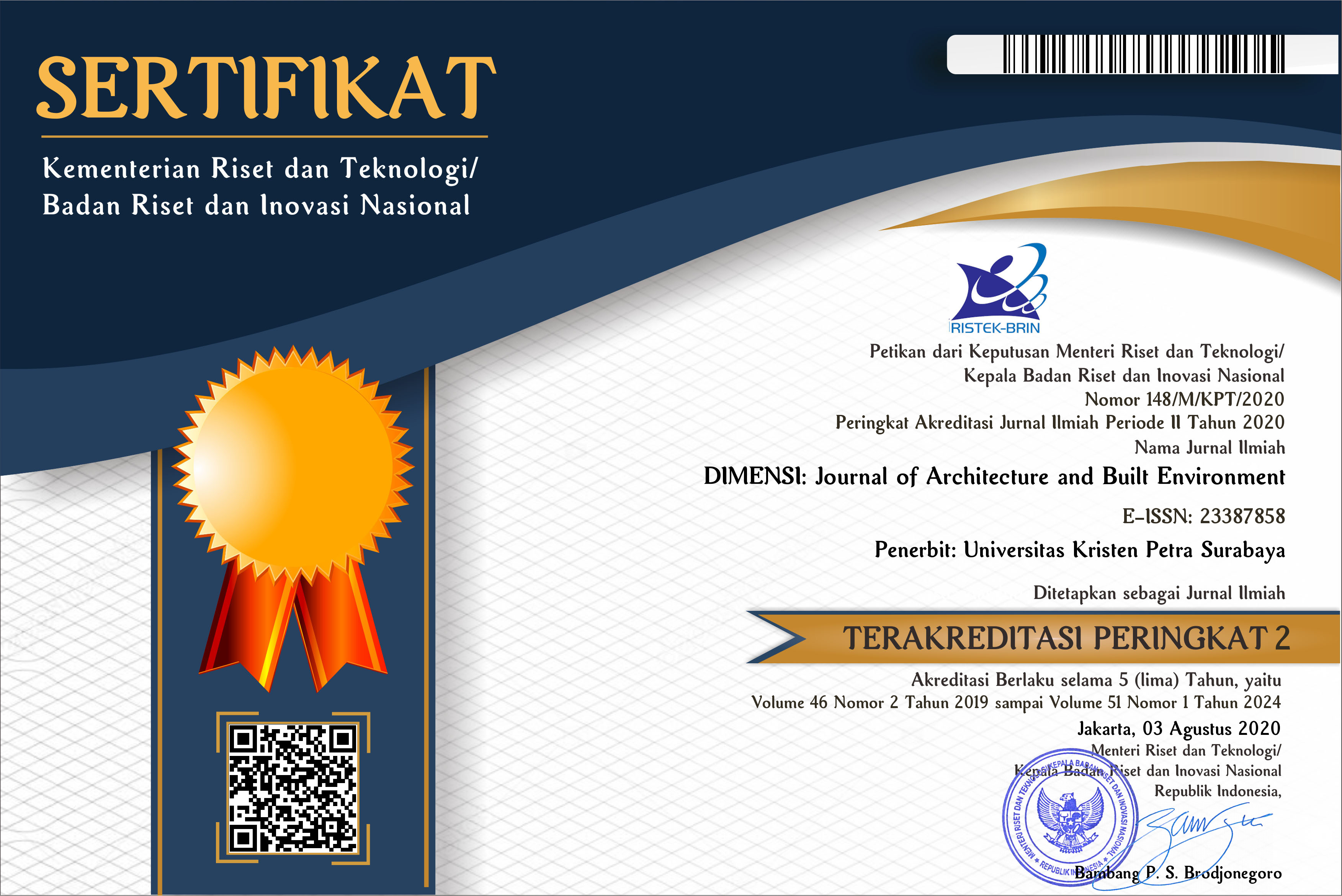DUTCH COLONIAL ARCHITECTURE AND CITY DEVELOPMENT OF MAKASSAR
 :
:
https://doi.org/10.9744/dimensi.30.1.%25p
Keywords:
Makassar urban and architecture history.Abstract
Indonesian old cities as the sites of government, trading, and ports have been established before the arrival of the Europeans. The form and pattern of settlements which served as the centres of the hinterlands were influenced by Indian or Hindu and afterwards by Chinese and European cultures. Makassar has been the dominant trading centre in Nusantara Archipelago. Its strategic location on South West peninsula of the sprawling island of Sulawesi gave it excellent access to the busy sea lanes of Java Sea, the Makassar straits, the Celebes and Banda seas and hence to many local trading networks as well as to the crucial long distance trade with India, China, and ultimately with Europe. The history of the city of Makassar began with the fort which was turned into the site of government, military and trade after the destruction of the Somba Opu fort. Despite of its similarities, there were principal differences with cities in Java which were also established in the same period.Downloads
Download data is not yet available.
Published
2004-06-17
How to Cite
Sumalyo, Y. (2004). DUTCH COLONIAL ARCHITECTURE AND CITY DEVELOPMENT OF MAKASSAR. DIMENSI (Journal of Architecture and Built Environment), 30(1). https://doi.org/10.9744/dimensi.30.1.%p
Issue
Section
Articles
License
Authors who publish with this journal agree to the following terms:
- Authors retain copyright and grant the journal right of first publication with the work simultaneously licensed under a Creative Commons Attribution License that allows others to share the work with an acknowledgement of the work's authorship and initial publication in this journal.
- Authors are able to enter into separate, additional contractual arrangements for the non-exclusive distribution of the journal's published version of the work (e.g., post it to an institutional repository or publish it in a book), with an acknowledgement of its initial publication in this journal.
- Authors are permitted and encouraged to post their work online (e.g., in institutional repositories or on their website) prior to and during the submission process, as it can lead to productive exchanges, as well as earlier and greater citation of published work (See The Effect of Open Access).

















